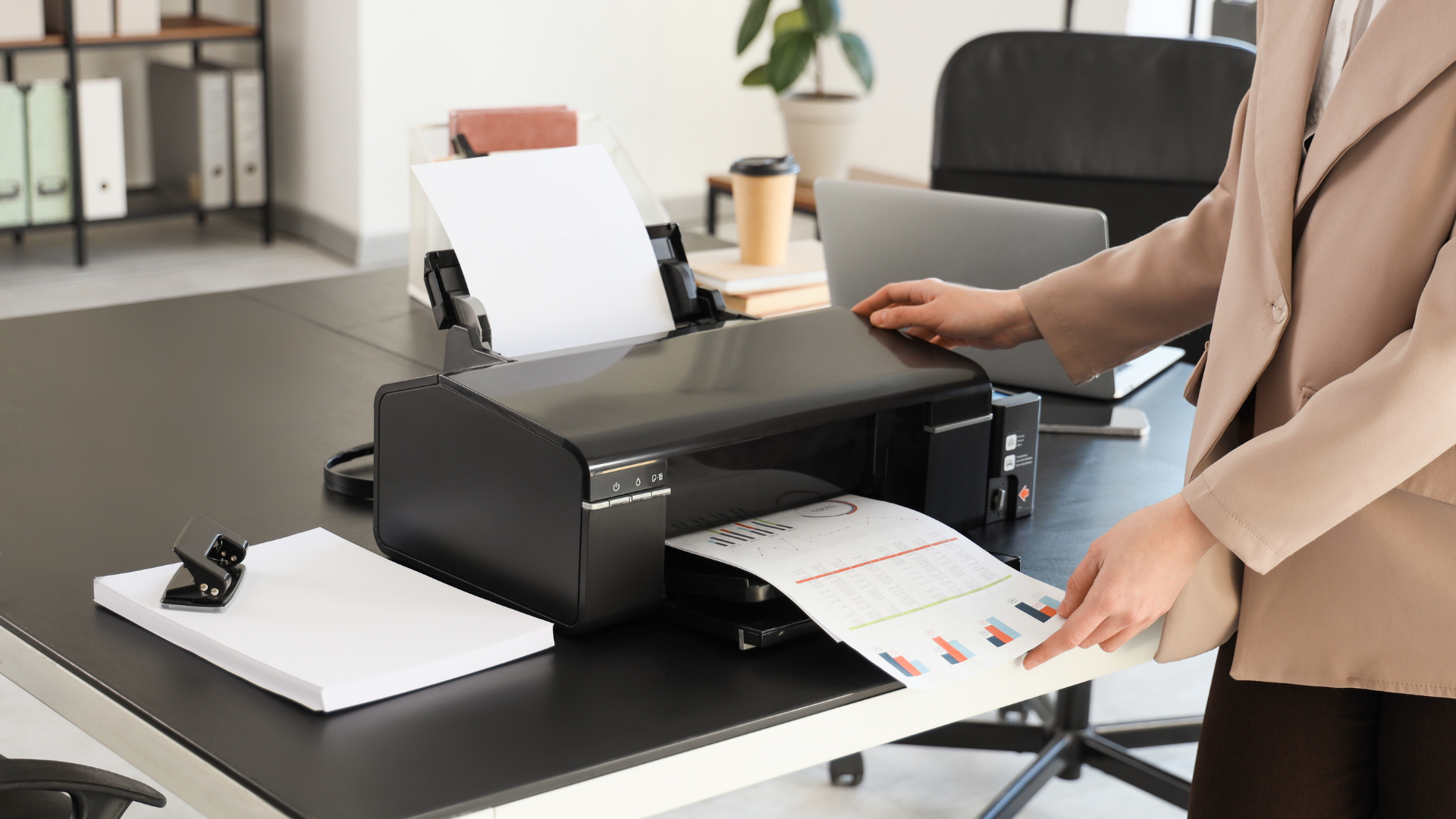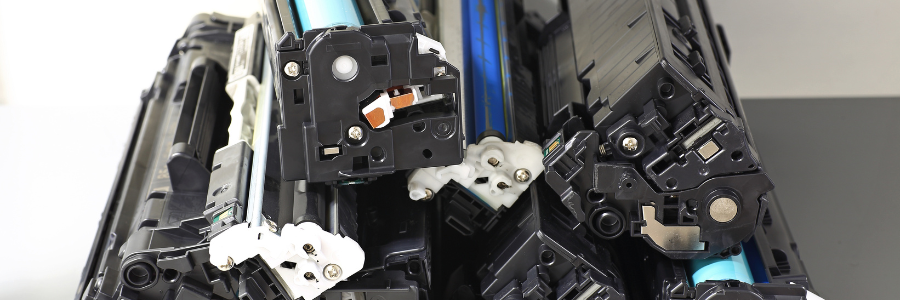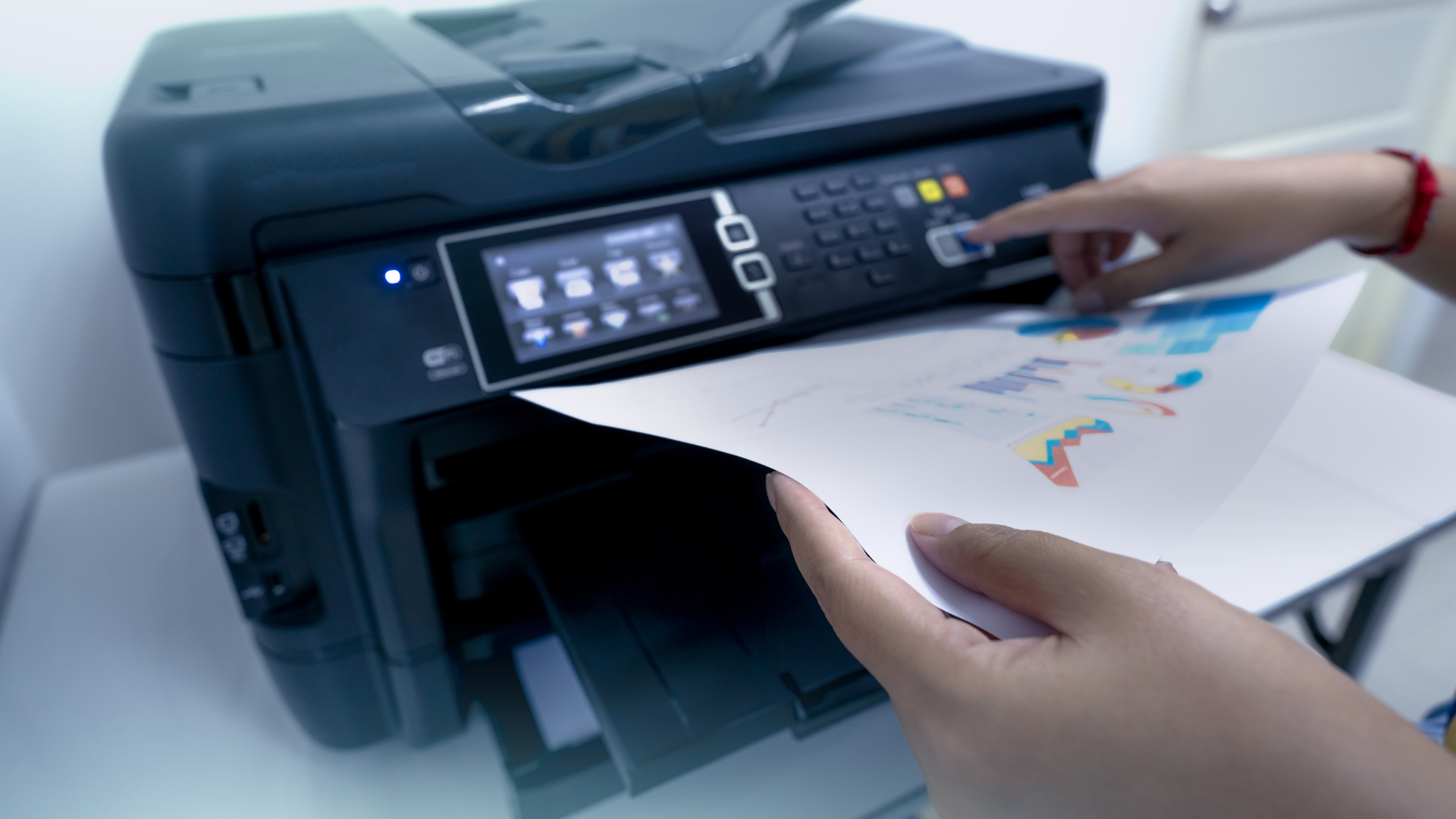Understanding Printer Functionality and Common Issues
The Basics of How Epson Printers Work
Epson printers, like many modern inkjet printers, operate by propelling droplets of ink onto paper to create text and images. The heart of an Epson printer is its print head, which houses numerous microscopic nozzles that are responsible for ejecting the ink.
The precision of these nozzles is crucial, as they determine the accuracy and clarity of the printed output. Over time, these nozzles can become clogged, leading to poor print quality or even a complete failure to print, despite having full ink cartridges.
- Ink System: Utilizes cartridges or an ink tank system.
- Print Head: Contains micro-nozzles for ink ejection.
- Paper Feed: Mechanism that pulls paper through the printer.
- Maintenance Functions: Includes nozzle check and cleaning routines.
It's important to understand that a printer's performance is not solely dependent on ink levels. Regular maintenance is essential to prevent common issues such as clogged nozzles or paper jams.
Typical Reasons for Printing Failures
When your Epson printer refuses to print despite having full ink cartridges, it can be due to a variety of reasons. Understanding the common causes of printing failures is crucial to effectively troubleshoot and resolve the issue.
- Clogged Print Heads: Over time, ink can dry and clog the print heads, especially if the printer is not used regularly.
- Software Glitches: Outdated or corrupted printer drivers can lead to communication breakdowns between the printer and your computer.
- Hardware Malfunctions: Faulty or damaged hardware components can prevent the printer from functioning properly.
- Incorrect Settings: Sometimes, the printer settings may be configured incorrectly, leading to print jobs being sent to the wrong printer or producing unexpected results.
It's important to note that not all printing issues are immediately apparent. Some problems may manifest as poor print quality, unusual noises, or error messages, which can all indicate underlying issues that need attention.
Recognizing the Signs of a
Malfunctioning Printer
Identifying when your Epson printer is not functioning correctly is crucial for timely troubleshooting. Printers often communicate issues through error messages or warning lights, but there are subtler signs that can indicate a problem. Below is a list of common indicators that your printer may be malfunctioning:
- Unusual noises during printing operations
- Frequent paper jams or misfeeds
- Declining print quality despite full ink cartridges
- Slow printing speeds or unresponsive behavior
- Error messages that persist after basic troubleshooting
It's important to trust your instincts if printing results are not as expected, even if your printer isn't displaying obvious error signals. Early detection of issues can prevent more serious problems down the line.
Troubleshooting Steps for Epson Printers
Checking Printer Connections and Settings
Before delving into more complex troubleshooting methods, it's essential to verify that your Epson printer is properly connected and configured. Ensure that all cables are securely attached and that your printer is connected to the correct network if using Wi-Fi.
- Check the power cable is plugged in and the printer is turned on.
- Confirm that the USB or Ethernet cable is securely connected to both the printer and computer.
- Verify that the printer is connected to the correct Wi-Fi network.
- Ensure that the printer settings on your computer match the paper size and type you are using.
Incorrect printer settings can often lead to printing issues. It's crucial to check that the printer preferences are correctly configured for the task at hand. This includes checking the print quality settings, paper size, and type, as well as ensuring that the correct printer is set as the default device.
Performing a Nozzle Check and Print Head Cleaning
One of the most effective ways to resolve printing issues when your Epson printer has full ink cartridges is to perform a nozzle check and clean the print head. This process can help clear any blockages that may be preventing ink from flowing correctly.
To start the nozzle check:
- Access the printer's maintenance settings through the printer software on your computer.
- Select the 'Nozzle Check' option and follow the on-screen instructions to print a test pattern.
If the test pattern shows gaps or is faint, a print head cleaning is necessary:
- Choose the 'Head Cleaning' option in the maintenance settings.
- Allow the printer to complete the cleaning cycle, which may take several minutes.
After cleaning, it's crucial to print another nozzle check pattern to ensure that the issue has been resolved. If problems persist, repeating the cleaning process may be necessary, but avoid excessive cleanings as they can deplete the ink levels.
Remember, regular maintenance of your Epson printer is key to preventing print quality issues and ensuring the longevity of your device.
Updating or Reinstalling Printer Drivers
Outdated or corrupted printer drivers can lead to communication issues between your computer and your Epson printer. Ensuring that you have the latest drivers is crucial for optimal printer functionality. If you're experiencing printing problems, updating or reinstalling your printer drivers might resolve the issue.
To update or reinstall your Epson printer drivers, follow these steps:
- Visit the official Epson support website.
- Select your printer model.
- Download the latest driver for your operating system.
- Run the installer and follow the on-screen instructions.
Remember, driver updates can introduce new features or enhancements that improve printer performance and compatibility with newer software.
If updating does not solve the problem, you may need to completely uninstall the printer drivers and then reinstall them. This process removes any errors or conflicts that might have arisen with previous installations.
Resetting the Printer to Factory Settings
Resetting your Epson printer to its factory settings can often resolve persistent printing issues that aren't fixed through other troubleshooting steps. This process restores the printer to its original state, as it was when you first
purchased it. It's a useful last resort before considering printer service repair.
- Turn off the printer.
- Press and hold the reset button on the back of the printer.
- Turn the printer back on while still holding the reset button.
- Wait for a message to print indicating that the printer has been reset.
Resetting the printer will erase all personalized settings, so it's important to note down any custom configurations you may wish to reapply after the reset. Remember, if the problem persists even after a factory reset, it may be time to consult a professional for printer service repair.
Ink-Related Issues and Misconceptions
The Reality of 'Full' Ink Cartridges
Many users experience frustration when their Epson printer refuses to print despite having 'full' ink cartridges. The truth is, a cartridge that appears full may not be functioning properly due to a variety of reasons. For instance, if a printer has been idle for an extended period, the ink may have dried up, leading to clogs in the nozzle. Additionally, 'full' can sometimes be misleading as cartridges have a microchip that estimates the ink level, which isn't always accurate.
- Clogged Nozzles: Ink drying up in nozzles can prevent printing.
- Microchip Errors: Misreads can signal incorrect ink levels.
- Air Bubbles: Trapped air can block ink flow even in new cartridges.
It's essential to understand that 'full' cartridges are not always indicative of a ready-to-print status. Regular maintenance and checks can help ensure that ink levels are not just visually full but functionally adequate for printing tasks.
Third-Party vs. Original Epson Ink Cartridges
When facing printing issues with an Epson printer, one critical factor to consider is the type of ink cartridges being used. Third-party ink cartridges may be less expensive, but they can also lead to compatibility and quality issues that affect printing performance. Original Epson cartridges are specifically designed to work seamlessly with Epson printers, ensuring optimal quality and reliability.
- Original Epson Cartridges
- Guaranteed compatibility
- High-quality prints
- Reliable performance
- Manufacturer warranty
- Third-Party Cartridges
- Lower cost
- Variable quality
- Potential compatibility issues
- No manufacturer warranty
It's important to weigh the pros and cons of each option. While third-party cartridges can save money upfront, they may end up costing more in the long run if they cause damage to the printer or result in poor print quality that necessitates reprinting.
The Impact of Infrequent Printer Use on Ink Flow
When an Epson printer is not used regularly, the ink flow can be adversely affected. This is because ink, by its nature, can dry out or coagulate, leading to clogs in the print head nozzles. Frequent use is key to maintaining an optimal ink flow and preventing issues that can arise from stagnant ink.
- Regular printing keeps the ink flowing smoothly.
- Stagnant ink can lead to clogs and poor print quality.
- Running a periodic nozzle check can help maintain ink flow.
It's important to note that searching for 'printer ink near me' and purchasing new cartridges won't always solve issues related to infrequent use. Instead, maintaining a routine of regular printing is essential to prevent ink flow problems and ensure the longevity of your printer.
Software and Firmware Conflicts
Ensuring Compatibility with Operating Systems
One of the critical factors in ensuring that your Epson printer functions correctly is the compatibility of the printer's software with your computer's operating system (OS). Incompatible drivers can lead to a printer not printing, even when the ink levels are full.
- Check the Epson website for the latest printer drivers and software updates.
- Verify that your OS version is supported by the printer's software.
- Install any available updates for your OS to maintain compatibility
It's essential to regularly check for software updates, as these can fix bugs and enhance printer performance. Failure to update can result in communication issues between your printer and computer, leading to printing problems.
Remember, an OS update on your computer might require a subsequent update of your printer's drivers to maintain compatibility. Always follow the manufacturer's instructions when updating software to avoid any conflicts.
Dealing with Corrupted Printer Software
Corrupted printer software can lead to a range of issues, including the inability to print despite having full ink cartridges. Software corruption may occur due to incomplete updates, system crashes, or compatibility problems.
To resolve software corruption:
- Uninstall the current printer software from your computer.
- Download the latest version of the software from the Epson website.
- Reinstall the software, ensuring that your computer meets the system requirements.
It's crucial to regularly update your printer software to prevent compatibility issues and improve performance. Neglecting updates can leave your printer vulnerable to software corruption.
If the problem persists after reinstalling the software, it may be necessary to explore deeper system issues or contact Epson support for further assistance.
The Role of Firmware Updates in Resolving Printing Issues
Firmware acts as the operating system for your Epson printer, controlling the hardware functions and enabling communication with your computer. Outdated firmware can lead to compatibility issues and printing malfunctions, even when the ink levels are full. Regularly updating the printer's firmware can resolve these issues and improve overall performance.
- Check the current firmware version
- Visit the Epson support website
- Download the latest firmware update
- Follow the installation instructions
Firmware updates often include fixes for known bugs, enhancements for printing quality, and new features that can improve your printer's functionality. It's crucial to ensure that your printer's firmware is up-to-date to maintain optimal performance and prevent printing issues.
Professional Solutions and When to Seek Help
When DIY Troubleshooting Isn't Enough
There comes a point in troubleshooting your Epson printer when you've exhausted all the do-it-yourself options. If your printer still isn't working despite having full ink cartridges, it may be time to seek professional help.
- Check the warranty status of your printer
- Review the troubleshooting guide one last time
- Prepare a summary of the steps you've already taken
Sometimes, the problem may be too complex or technical for a layperson to solve. In such cases, professional intervention is necessary to avoid causing further damage to the printer.
If you're unsure about the next steps, consider the following:
- Document the issue in detail, noting error messages and unusual printer behavior.
- Gather all relevant information about your printer model and the troubleshooting steps you've already attempted.
- Reach out to Epson's customer support or a certified technician for guidance.
Contacting Epson Support for Assistance
When you've exhausted all the troubleshooting steps and your Epson printer still refuses to print, it's time to seek professional help. Contacting Epson Support should be your next move. They offer a range of services to diagnose and resolve your printer issues.
- Identify your printer model and serial number before reaching out.
- Have a summary of the issue and any error messages ready to explain.
- Be prepared to follow the support agent's instructions for additional diagnostics.
Epson's customer service is designed to guide you through the resolution process, ensuring that your printer returns to its optimal functioning state. Remember, timely intervention by professionals can prevent further complications and potentially save you from costly repairs or replacements.
If the support team determines that your printer requires more extensive repairs, they will inform you about the next steps, which may include service center visits or in-home servicing options. It's crucial to follow their recommendations to restore your printer's functionality.
Exploring Repair or Replacement Options
When faced with persistent printing problems, it may be time to consider whether repair or replacement is the most cost-effective solution. Assessing the age and condition of your Epson printer is crucial in making this decision. If your printer is relatively new and under warranty, repair might be the best option. However, for older models, replacement could be more economical in the long run.
- Evaluate the warranty status and repair costs
- Consider the printer's age and frequency of issues
- Compare the cost of repair versus a new printer model
It's important to weigh the benefits of advanced features and improved performance that a new printer could offer against the cost and potential environmental impact of disposal.
Ultimately, the decision to repair or replace should be informed by a balance of cost, convenience, and sustainability. If you opt for replacement, ensure to recycle your old printer responsibly to minimize environmental impact.






